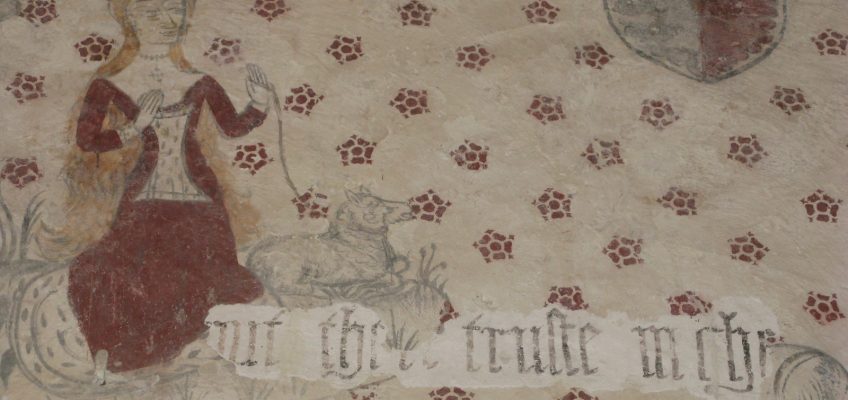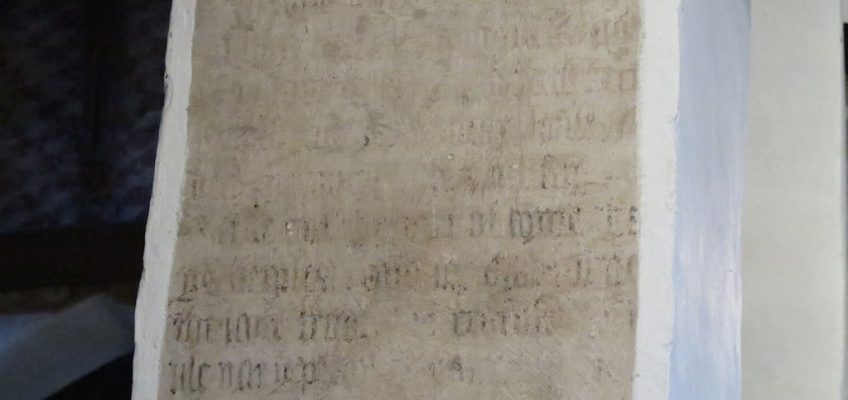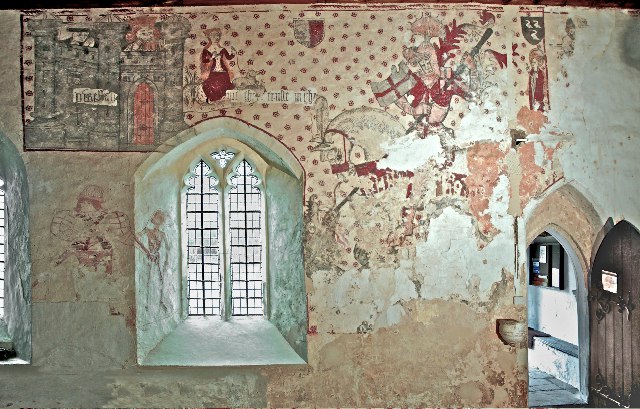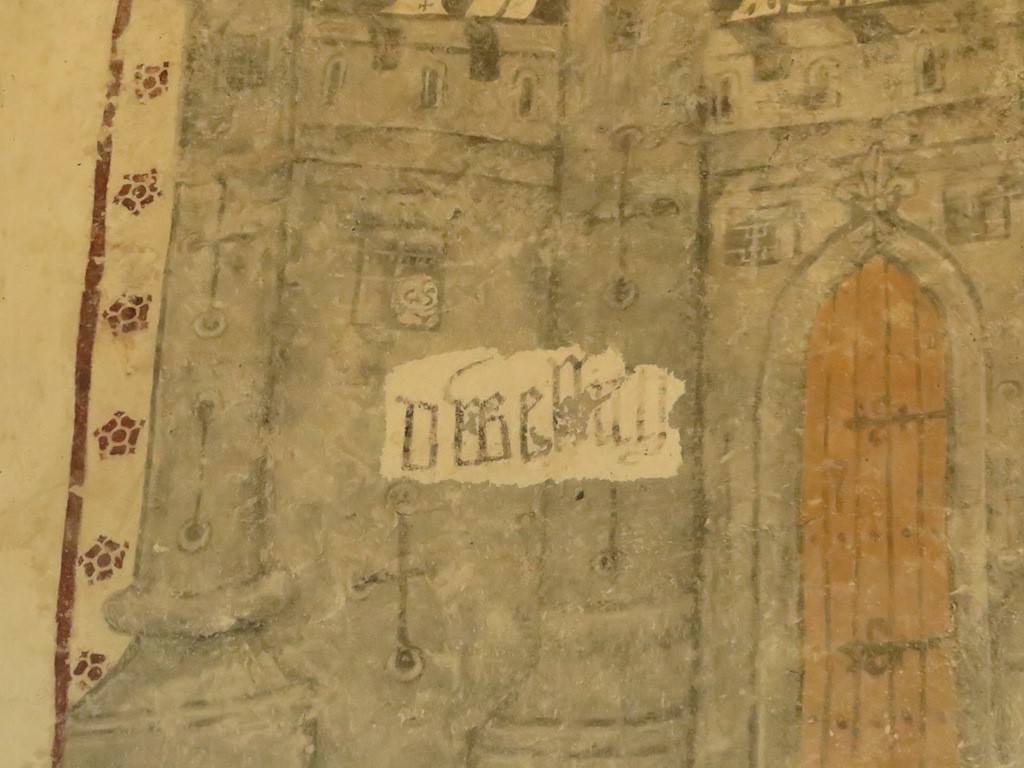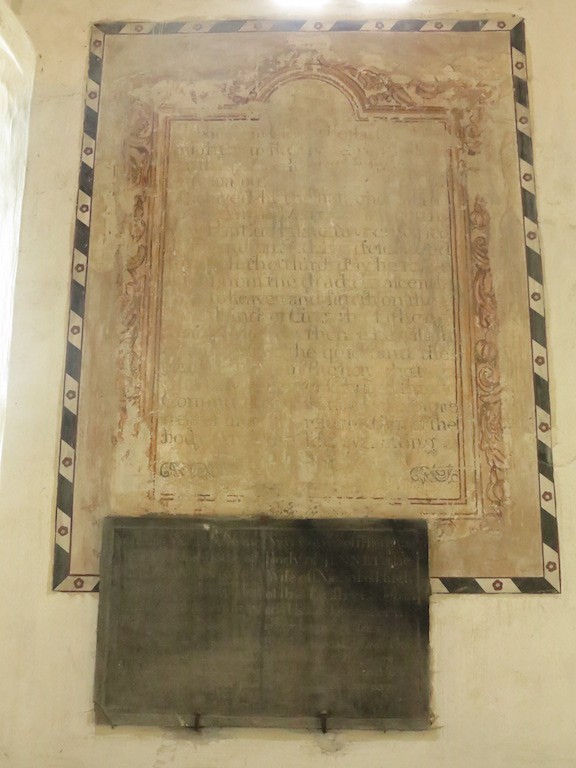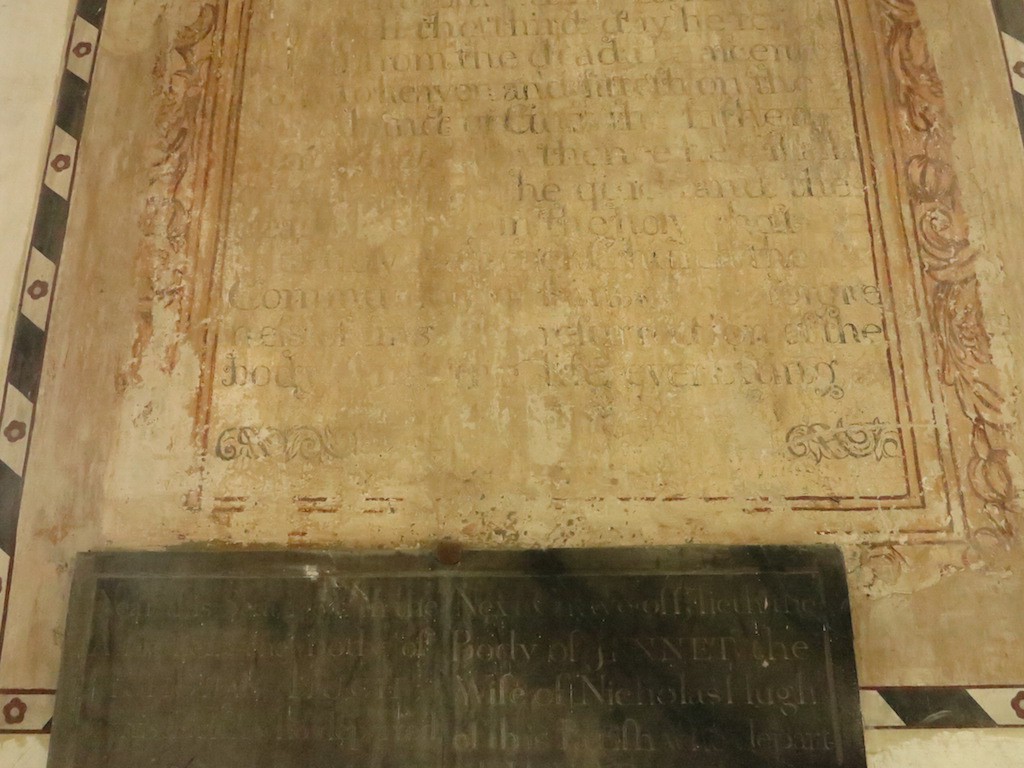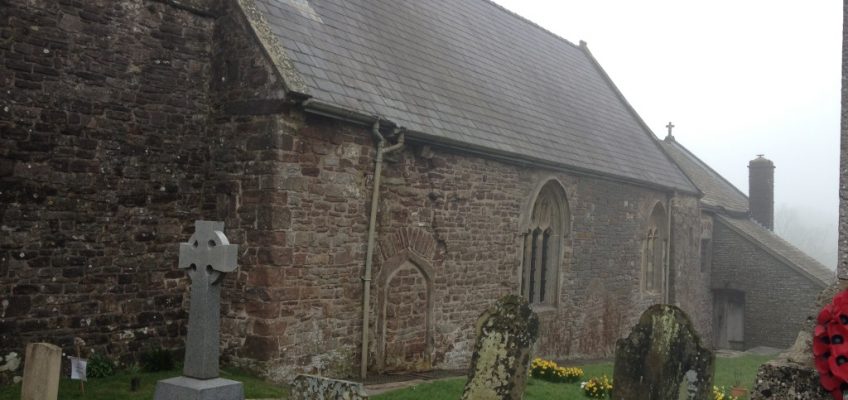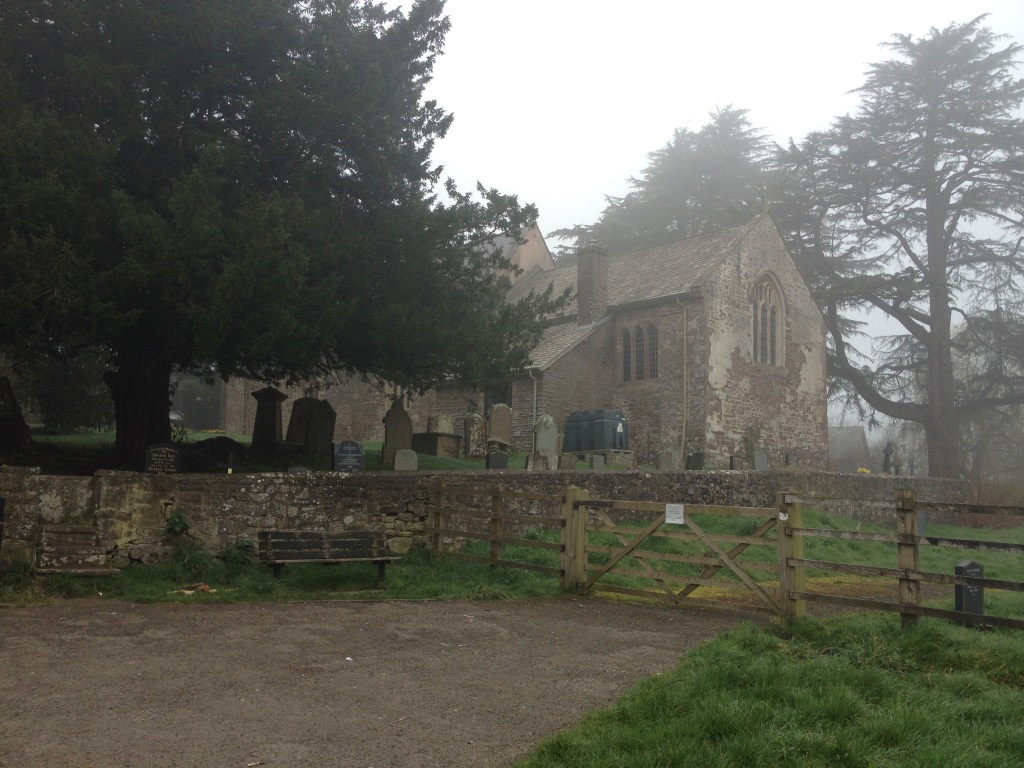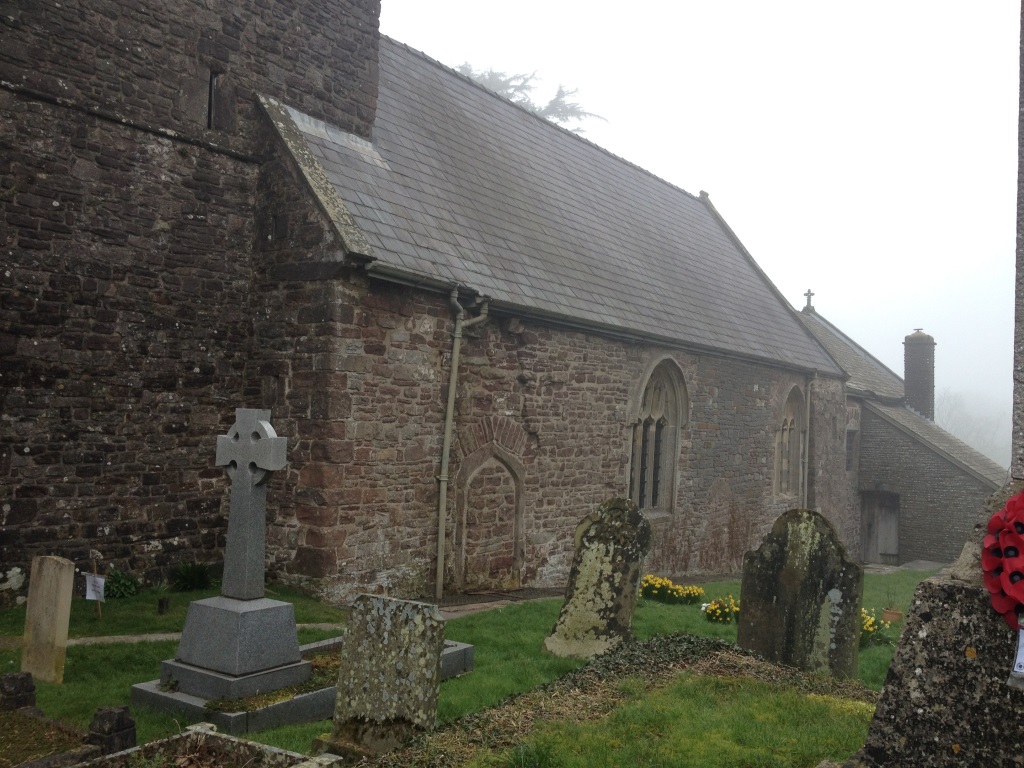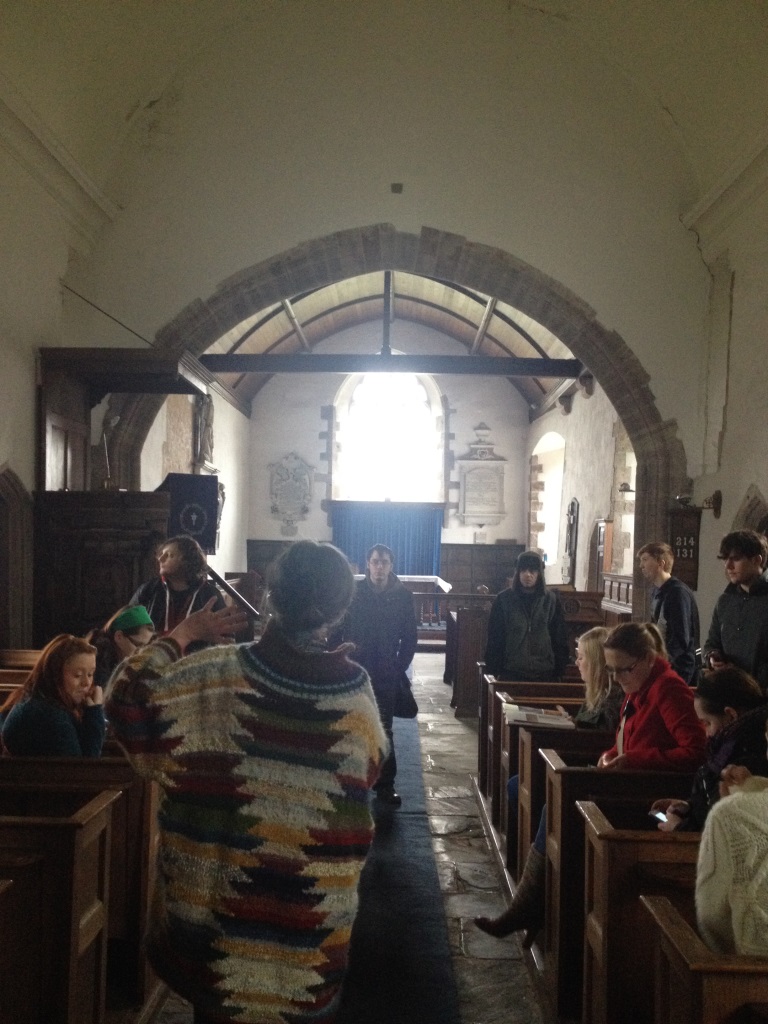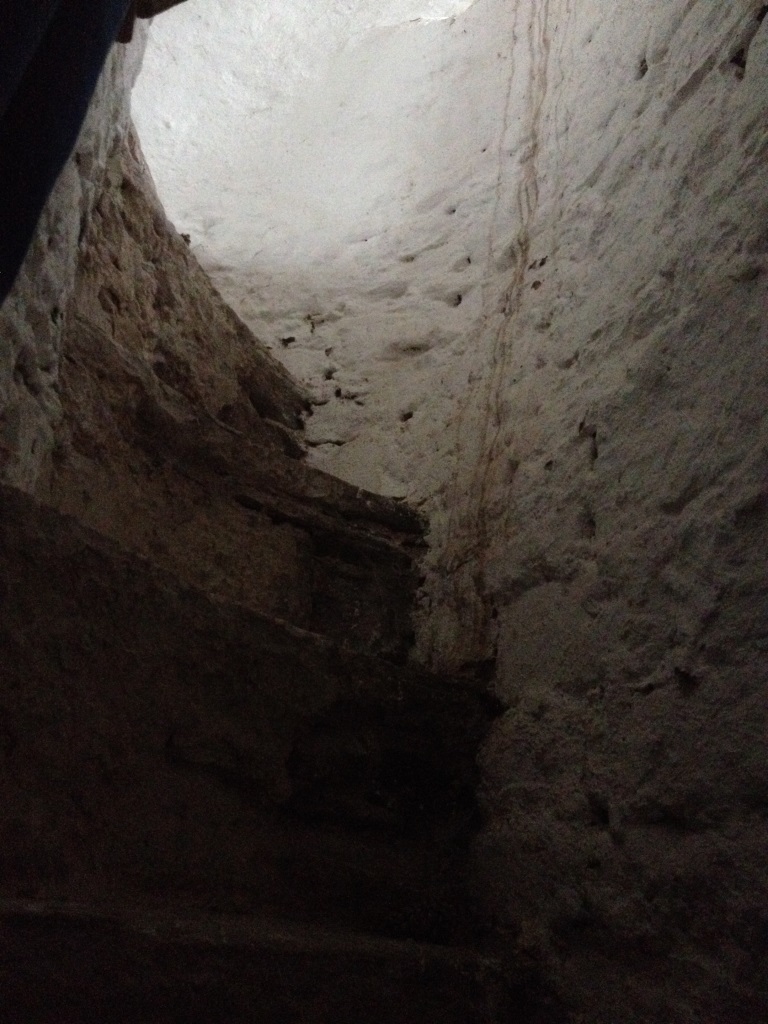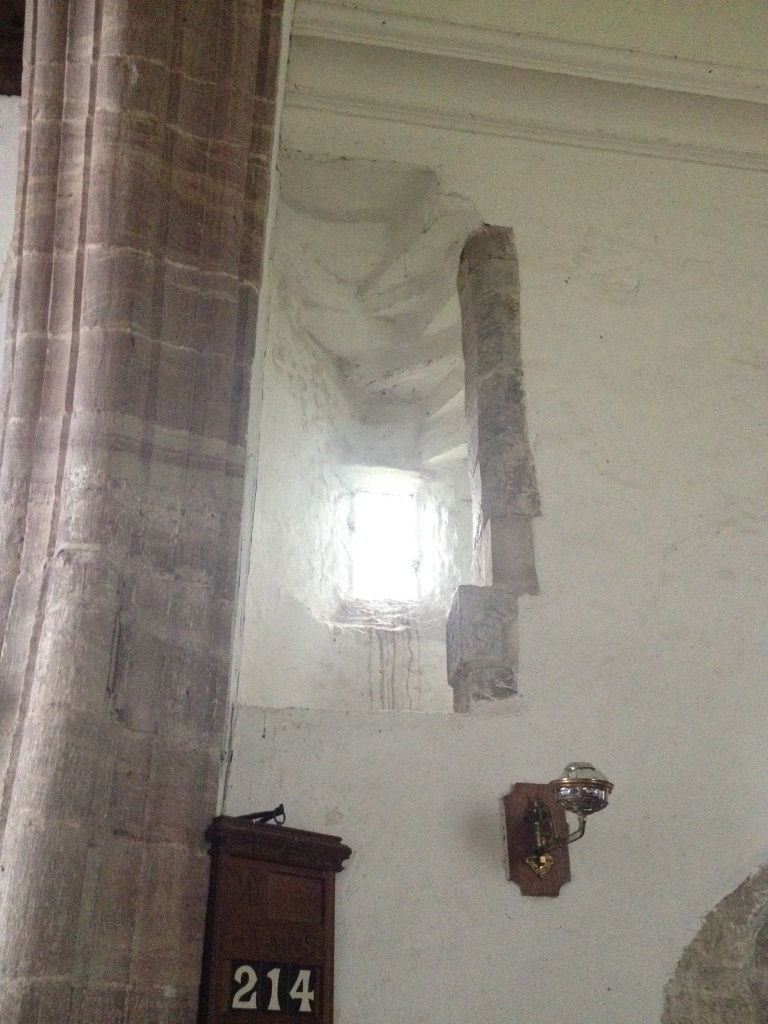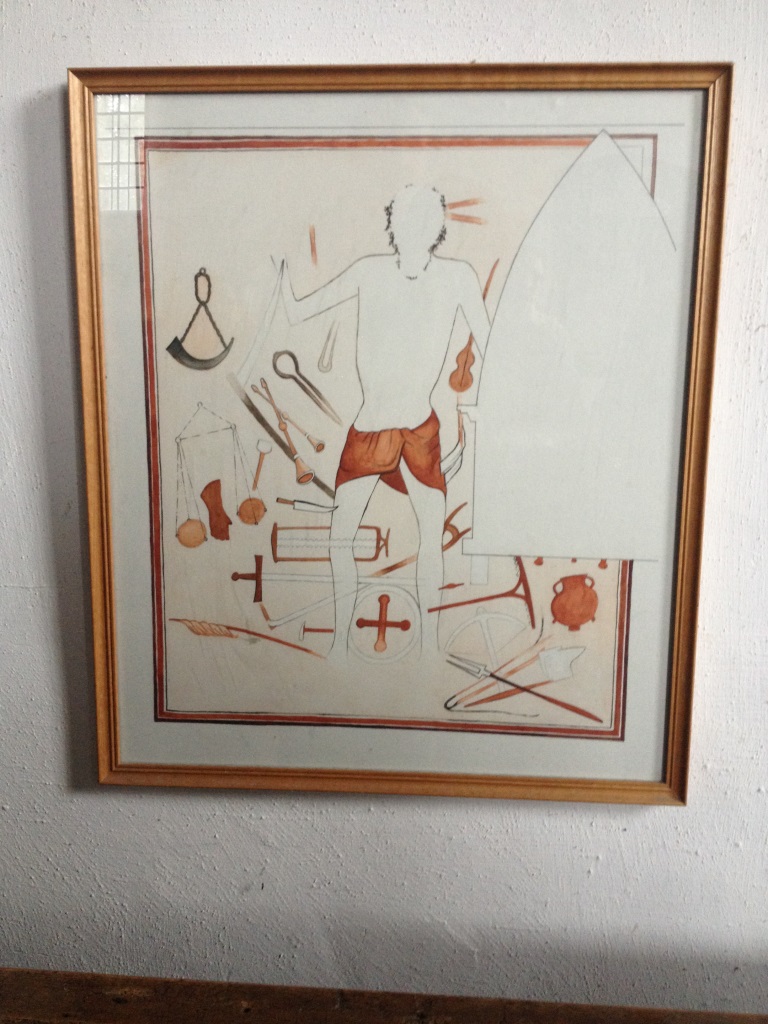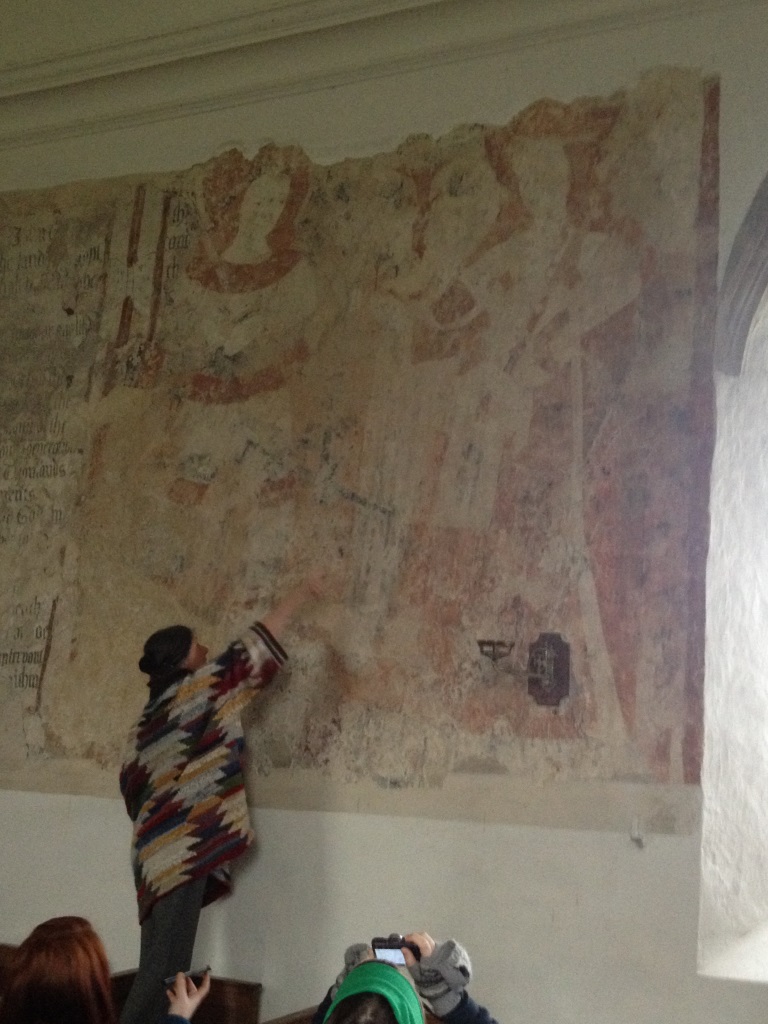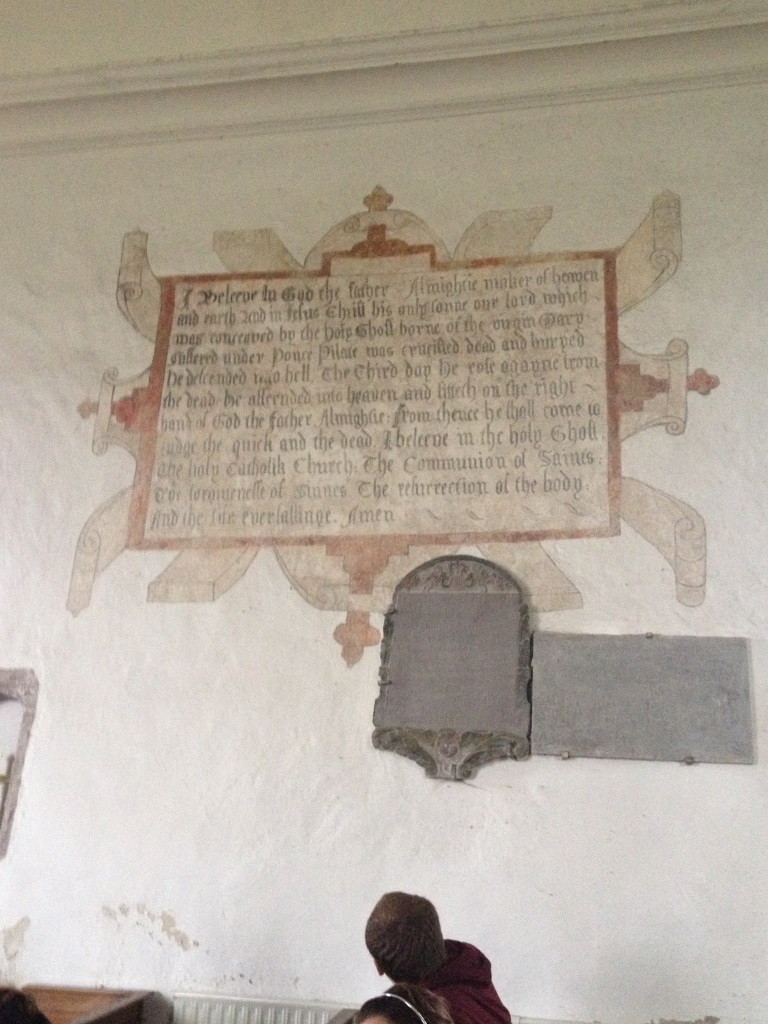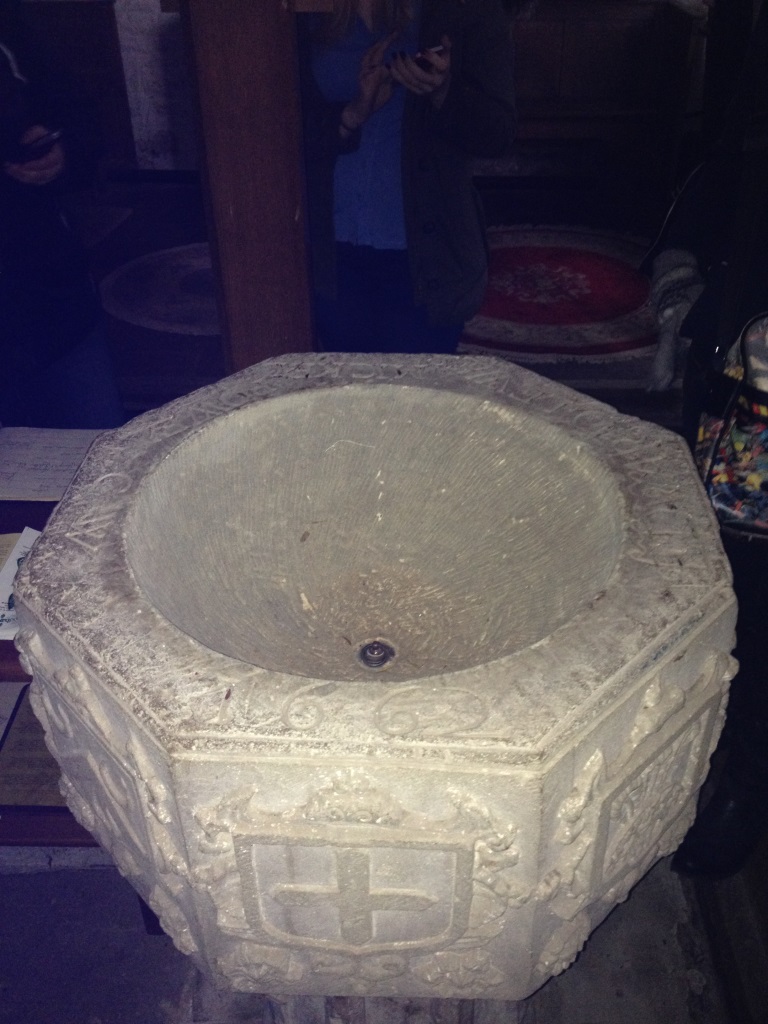We are still having fun with the wall paintings at Llancarfan. The most recent phase of conservation work has revealed (what we suspected would be there), facing the Seven Deadly Sins, the Seven Corporal Acts of Mercy. The last two, Visiting the Sick and Burying the Dead, are in superb condition with a wealth of intriguing detail. Clothing the Naked is less well preserved and the others may have been lost under George Pace’s little lean-to vestry.
Recent conservation has also revealed some more blackletter texts on east, south and west walls. We already had some blackletter text overlying the painting of George and the Dragon – here in George Ferzoco’s photos.
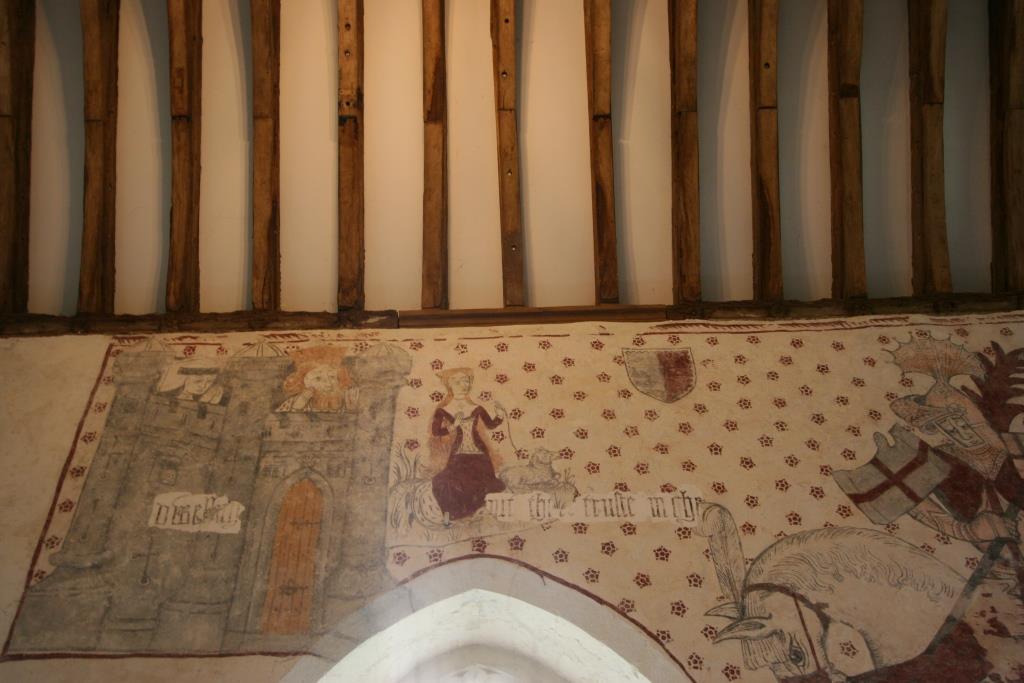
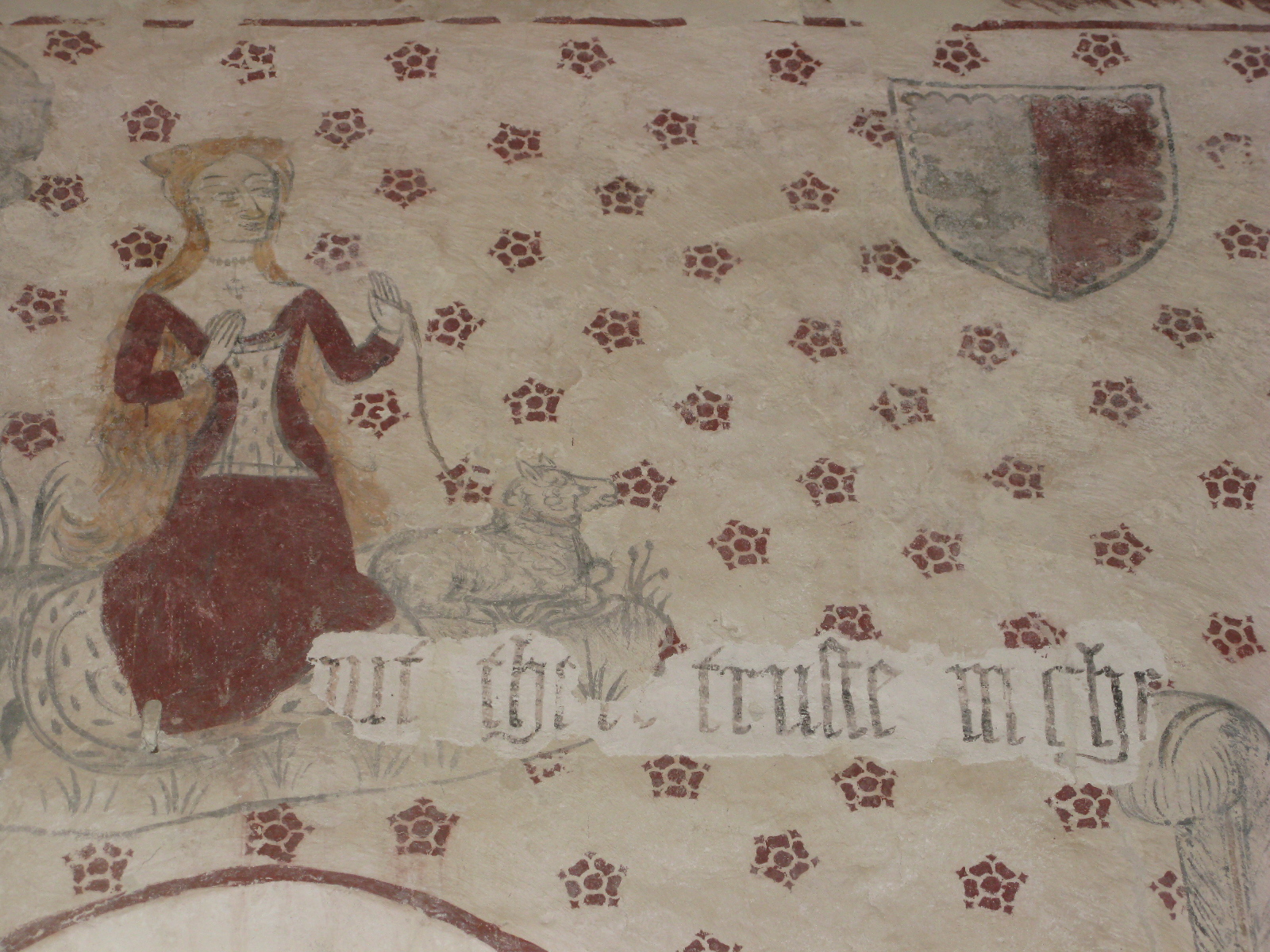
I have puzzled over this ever since it was revealed at the beginning of the project. Something including the words ‘dwelleth’ then ‘put thy truste in Christ’ – or perhaps ‘put their truste’ – but it rang no bells.
Then photos arrived of the more recent discoveries. (These are photos by Kevin Thomas, FRPS, (c) St. Cadoc’s Church, Llancarfan.)
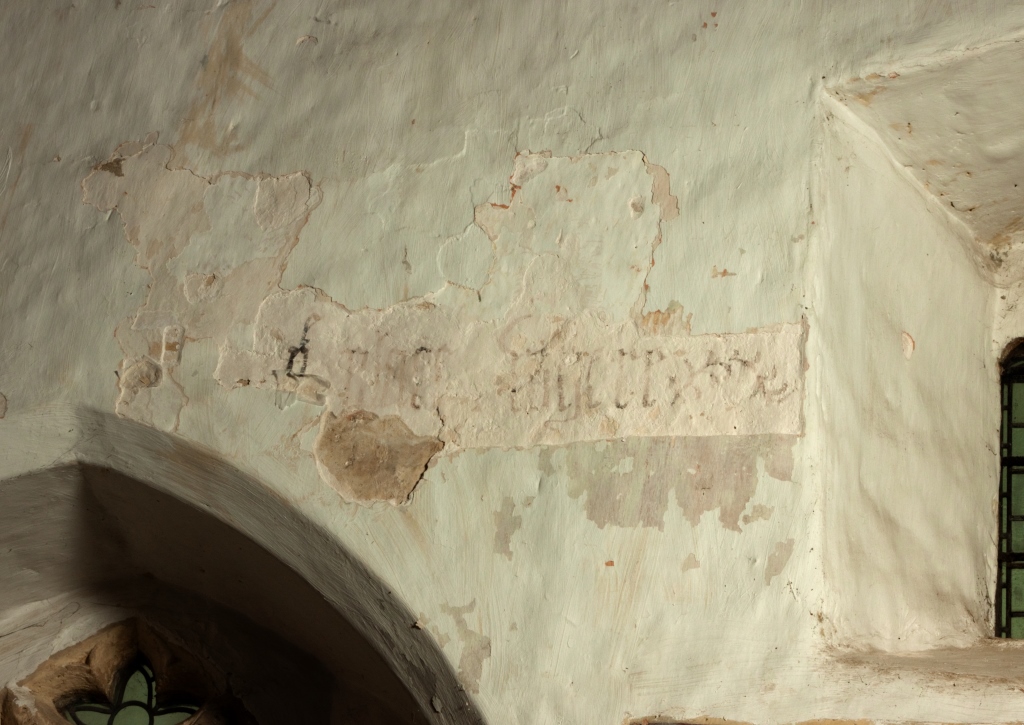
This looked like ‘the place where …’. I got quite excited at the possibility of a Nativity narrative – the star that led the Wise Men and ‘went ahead of them until it stopped above the place where the child lay’. But then I realised it was much more likely that it came from Psalm 26 – ‘Lord, I have loved the habitation of thy house, and the place where thine honour dwelleth’. Much more suitable for a church.
So the word ‘dwelleth’ came at the end of the text and we needed to look for something different for what followed. Somehow I had got it fixed in my head that we were looking at something about putting our trust in Christ. But on Tuesday I went back to Llancarfan to pre-walk the May Day walk route with Ian Fell (more on that anon). We had a lovely walk in the sunshine, stopped for a drink at the Bells in Penmark and met the Cowbridge Ecumenical Cycling Club. Mostly retired men from all the churches and chapels around Cowbridge, they get together for a gentle ride in the country and lunch in a pub somewhere. All very civilised.
We popped into the church on the way back. I started to wonder if the ‘Ch…’ could be something else.
Chariots?
Psalm 20 verse 7, ‘Some put their trust in chariots, and some in horses; but we will remember the Name of the Lord our God.’
The really intriguing thing is that this isn’t the King James Bible version (that is just ‘some trust in chariots’ ) but the older translation by Miles Coverdale that Cranmer used in the Book of Common Prayer. (Plagiarism? Maybe – though I’m sure he asked – but Cranmer was tasked with translating the BCP in 1547 along with all the other tasks involved in trying to complete the English Reformation. I suspect he had done some of the work as therapy in the dark days of the mid 1540s when his wife and children had had to go back to her family in Germany and he was rattling around Lambeth Palace getting just a bit depressed – but he still had plenty else to do in 1547 and one can hardly blame him for not wanting to reinvent the wheel.)
So does the use of the BCP version of the psalm rather than the King James version suggest that we are looking at something late 16th century?
Canon Belcher has another suggestion. He thinks the whole thing may have been part of a process of rededication of the church after the damage caused during the Civil War, when one of the windows was battered down by a farmer named Bush, crying ‘Down with the great whore of Babylon’.
Not sure what the Ecumenical Cycling Club would make of that …
Ian has yet another suggestion. The bit about not putting your trust in horses would have overlain the huge equestrian figure of St George. Was this done within the lifetime of those who would remember the wall painting of the saint – and was it a deliberate dig at the cult of the saints?
All this suggests that we might need to look at the Book of Common Prayer for sources for the other post-Reformation texts. There are fragments on the east and west walls of the south aisle. So far I can’t make anything of them, but little by little we are getting there.

